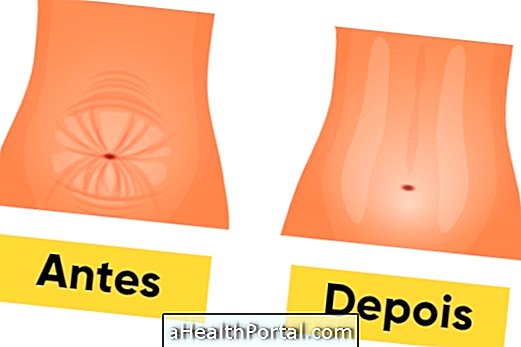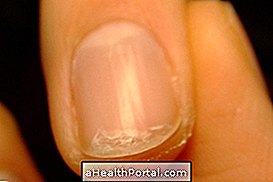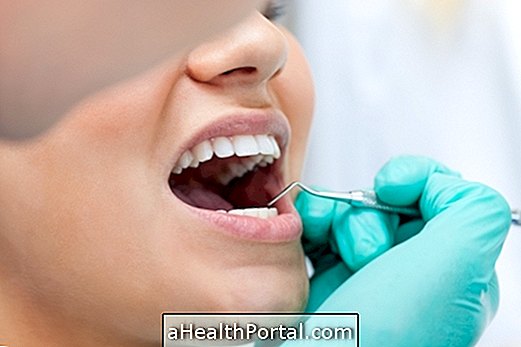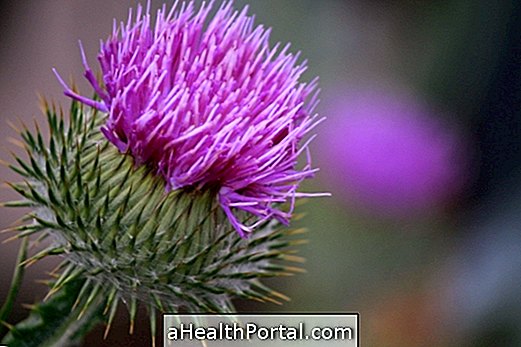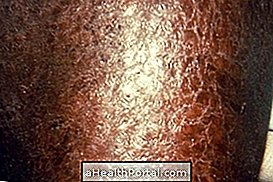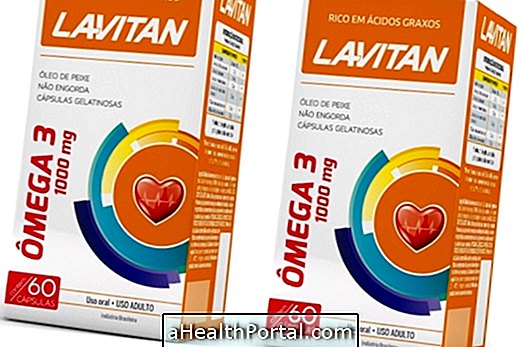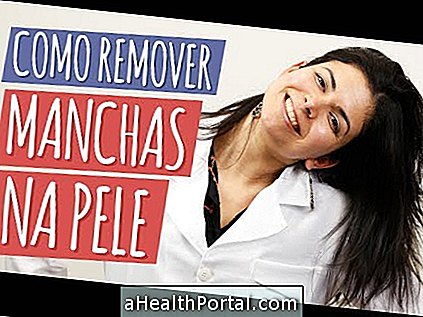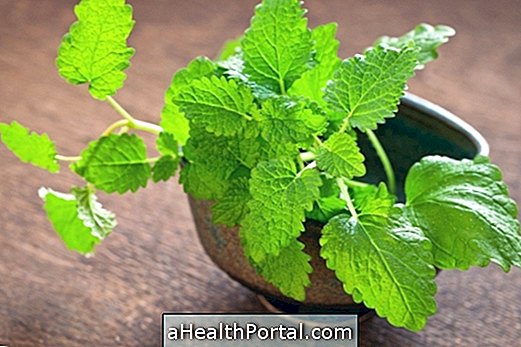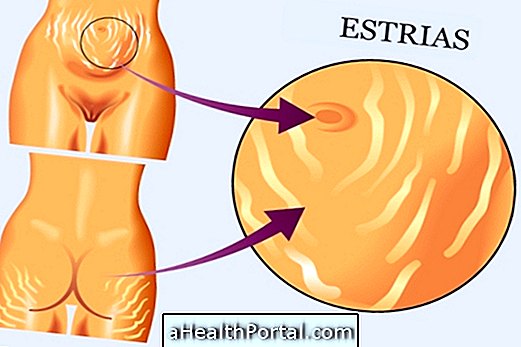Stretch marks are scars on the skin that form due to the breakdown of collagen and elastin, when the skin stretches too much in a short period of time such as during pregnancy, growth during puberty, or when the person undergoes sudden weight changes.
The use of stretch mark creams helps to reorganize these fibers, reducing the amount and appearance of stretch marks, but are more effective in red or purple stretch marks. Learn how to identify stretch marks.

1. Retinoic acid
Also known as tretinoin, retinoic acid can help eliminate stretch marks as it improves the quality of collagen and increases its production, making the skin firmer and thus reducing the thickness and length of stretch marks.
In addition, retinoic acid also promotes cell renewal by improving the appearance of the skin. The treatment time varies according to the size of the striae and their thickness. See more about retinoic acid for stretch marks.
Retinoic acid is available in various concentrations in anti-stretch mark creams, such as Gel Cicatricure.
2. Vitamin E
Creams rich in vitamin E provide deep hydration and reduce the chances of new stretch marks appearing as they increase the elasticity of the skin. In addition, vitamin E has anti-oxidant properties, very important to prevent aging of the skin. Learn more about this vitamin.
Vitamin E is present in many anti-stretch mark creams, as is the case for Velastisa anti-stretch marks, Bio-oil or Cicatricure anti-stretch mark cream, for example.

3. Rosehip oil
Rosehip oil can be used to attenuate stretch marks as it has a powerful regenerative and emollient effect on the skin and is rich in fatty acids such as oleic acid, linolenic acid and vitamin A that contribute to the reinforcement of collagen and elastin synthesis, which are very important to maintain the firmness and elasticity of the skin.
Some creams already contain rosehip oil in their constitution, such as Velastisa anti-stretch marks cream and Mustela stretch mark prevention oil, however, a few drops can be added to an anti-stretch mark cream before the moment of application .
4. Camelina oil
Camelin oil is rich in essential fatty acids, such as omega 3, which enhances the elasticity and smoothness of the skin and decreases the risk of developing stretch marks. This oil also prevents premature aging of the skin.
5. Vitamin C
Vitamin C is a powerful anti-oxidant that prevents aging of the skin and is also essential in the production of collagen, thus giving more elasticity to the skin. In addition, this vitamin also has a whitening power, which may be useful in darker streaks. Learn more about this vitamin.

7. Asian Sparkle
The Asian spark is a medicinal plant with many benefits for the skin. This plant helps to prevent the appearance of stretch marks due to its healing properties, since it stimulates the production of collagen. See more benefits of Asian spark for health.
The Asian spark is present in anti-stretch mark creams like Velastisa anti-stretch marks, Cicatricure anti-stretch marks or Cicatricure gel.
8. Glycolic acid
Glycolic acid is a chemical scrub that removes the upper layers of dead skin, revealing healthy skin underneath. Thus, its daily application will reduce the appearance of stretch marks. However, this ingredient may be very strong for some skin types and should be used with caution.
Glycolic acid can be found in Ligia Kogos stretch mark cream.

9. Chamomile oil
Chamomile oil strengthens the skin tissue, improving elasticity and protecting it from dryness. In addition, it also has healing properties, being a good ingredient for an anti-stretch mark cream.
There are some creams with chamomile oil like Cicatricure gel and Bio-oil, for example.
10. Sweet almond oil
Sweet almond oil is a great moisturizer for the skin, improving its elasticity. You can only use the oil to prevent pregnancy stretch marks, or added to an anti-stretch mark cream to potentiate its effects. See more about this oil.
Many anti-stretch marks creams already have almond oil in their makeup, such as Hydramamy moisturizing lotion or Materskin body lotion.

It is recommended to pass the cream in all the places affected by the stretch marks, with a massage, in order to absorb the product. If the cream is used to prevent the appearance of stretch marks, it should be applied in the regions most prone to its development, such as the belly, backs, breasts, and thighs.
Watch the following video and see other techniques that can be used to eliminate stretch marks:



